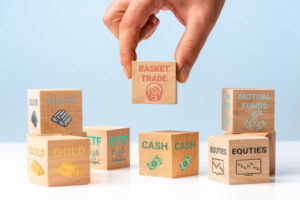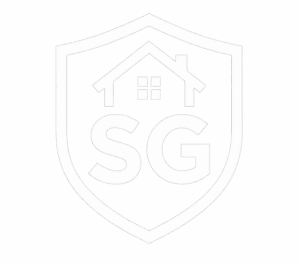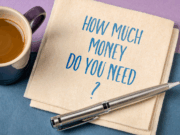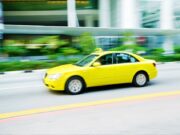Why Cashback Cards Make Insurance Less Painful
Getting Car Insurance in Singapore is a bitter pill to swallow year after year. It is a must, yet it does not feel good. Hundreds or thousands can be chewed up by premiums in a single bite. However, this is where the game is changed: with cashback credit cards. And all of a sudden, after that hurtful payment, a clawback of a small value. The art is to discover what cards to use and which ones not to use and how to play the rules without falling over the underfoot limits.

Big Bills into Small Rewards
The insurance premium is normally a big transaction. That is why they are ideal in cashback strategies. A right card paying a yearly premium of $1,200 might refund you with $60 to 120. Twenty, maybe twenty, pounds of petrol–to use the correct bit of plastic.
Not all the cards consider insurance spending as cashback-eligible. It is silently not rewarded by many banks. Reading the small print will help you avoid disappointments when you do not find the cashback in the statement.
Timing Matters Too
The rebate in cashback cards is usually limited. When your insurer allows you to pay in installments, you may extend the premium to spread over months and maximize rewards. Otherwise, you will wish that you had a card that has more or no caps. Otherwise, making a huge payment only bursts the cap, and you miss out on what you would have made.
How Different Cashback Structures Affect Drivers
Not every cashback card is constructed equally. Some reward flat percentages. Some have tiered systems, and you have to reach a minimum spend. Being aware of the structure spares you the expectations that do not match each other.
Flat-Rate Cashback Cards
The easiest are flat-rate cards. They dedicate the same percentage on each dollar expended. No hoops, no minimums. In the case of insurance payments, these cards are glorious, as you know you are likely to get a payback, whatever your shopping patterns may be in a month.
Say you’ve got a 1.5% flat-rate card. For a $1,200 insurance bill, you get back 18 without lifting a finger. It does not seem like a lot, but combine petrol, groceries and utilities throughout the year and the amount increases with time.
Tiered Cashback Cards
These cards charge higher proportions–up to 5 percent or higher–but only when you spend a certain amount. That is to say, you need to spend, say, 800 a month in total expenditure. Insurance payments will allow you to push to that threshold to unlock higher cashback on all of your other categories.
The catch? In case the card does not use insurance as a category of bonus, the card may be counted toward the threshold and not receive the reward. Or worse still, it is not counted. This is why it is essential to read terms just as much as you should select the appropriate car workshop.
Category-Specific Cashback
Other cards offer additional benefits in terms of groceries, food and petrol. Insurance tends to fit in the other category, as it has the smallest percentage. This does not render them useless, but the returns are lesser. These cards have been most effective in combination with installment payments that make the cost spread.
Installment Stretching of Cashback
Insurance bills are chunky. Banks are aware of this, and this is the reason why most of them will turn them into installment plans with little or no interest.
The Benefit of Installments
It is easier to think of a 1,200 payment that has been broken down into 12 monthly payments of 100 each as something that can be slipped into the monthly limit of a credit card that offers a cashback credit. You milk the cap over the year, not blow it. You squeeze rewards, and you waste none each month.
Watch Out for Fees
Cashback is canceled by some installment conversions that have fees associated with them. Always go by the question of whether the savings are higher than the costs. A 2% admin fee on $1,200 is $24. When the cashback is just 18 dollars, then you are losing money.
Maximizing the Cashback of Drivers
Value Come with no card. It’s about strategy.
Pair the Right Card With the Right Insurer
Not all insurers take all cards. Others avoid using some banks, and some do not have an option of installment. Making sure that what you are accepting is alright spares embarrassment at the point of purchase.
Stack Benefits
Certain websites allow you to pay insurance by payment services that provide their own rewards. Using them, you can layer cashback on the platform and your card. It is like dipping fries twice–you have to get more flavor in one bite.
Sync With Other Big Expenses
The time of the year when insurance premiums are usually paid off is rather similar. Arrange additional large expenses during that month to earn tiered cashback to the maximum. Take a family holiday booking and pair it with insurance, and all your expenditure is unlocked to the higher level.
Singapore-Specific Challenges With Cashback on Insurance
The market of the local credit card is generous and suspicious. The cashback offers are very attractive in marketing and usually have strings attached that catch drivers off guard.
Exclusions Galore
A lot of cards silently disqualify insurance as cashback. You will find the words in the fine print. There is no worse feeling than anticipating a 50-dollar cashback and seeing a zero. That is why the veterans never leave the exclusion list unverified.
Caps That Kill the Deal
High-percentage cashback cards tend to have low monthly limits–often 30 or 50 dollars. When you only get a maximum of $30 on your $1,200 premium, then the percentage is irrelevant. These situations can make flat-rate, uncapped cards shine.
Pulling It All Together
Drivers will never stop complaining about car insurance. Yet combine it with the appropriate cashback card, and it becomes an opportunity instead of a drain.
The bottom line? Don’t pay premiums blindly. Use them as a part of your rewards strategy. Since you are paying a lot of money, you may as well squeeze a little juice out of the system. And in Singapore, where every cent counts, that cash back could well be the next visit along the ECP with the windows down and the music up.











